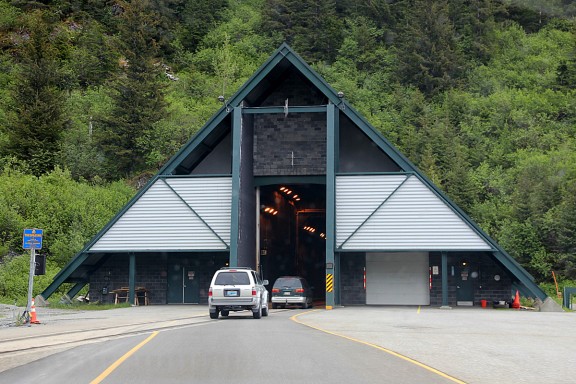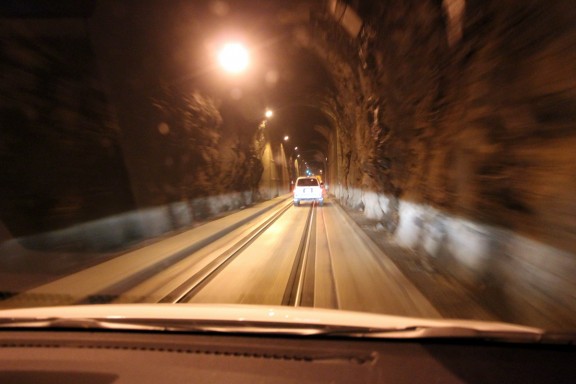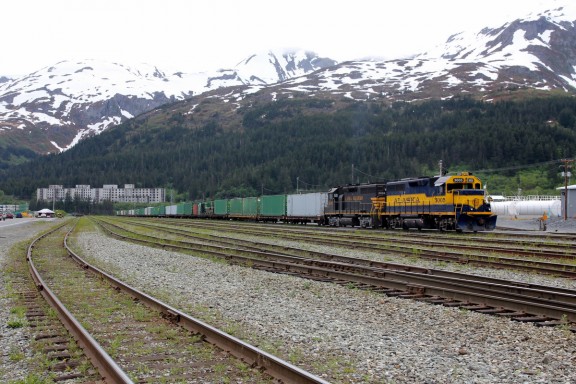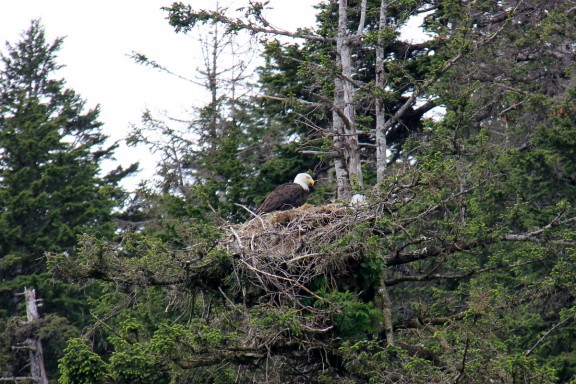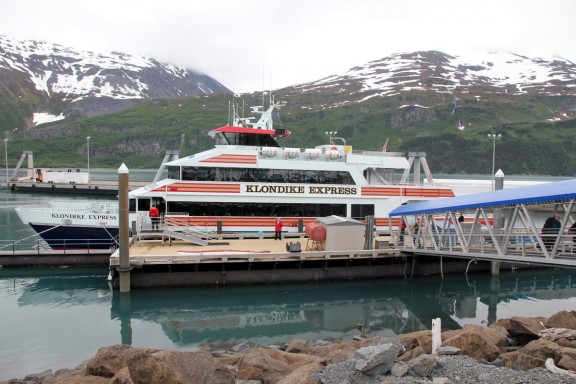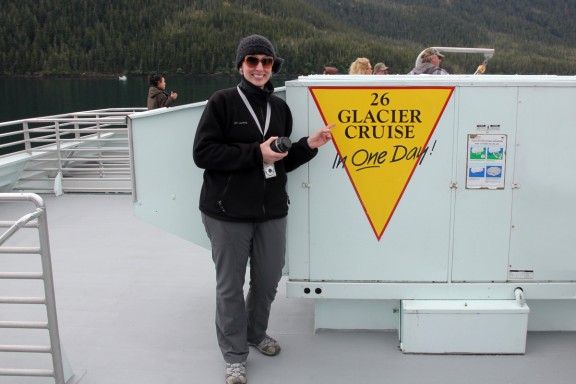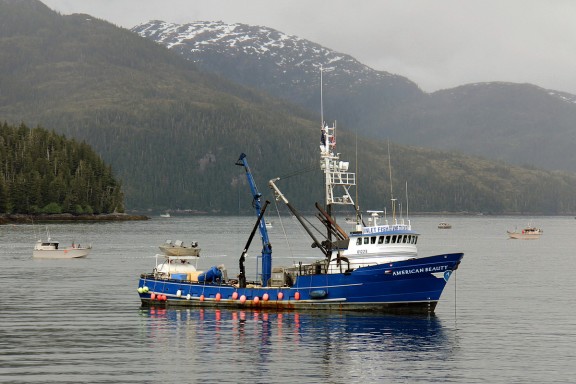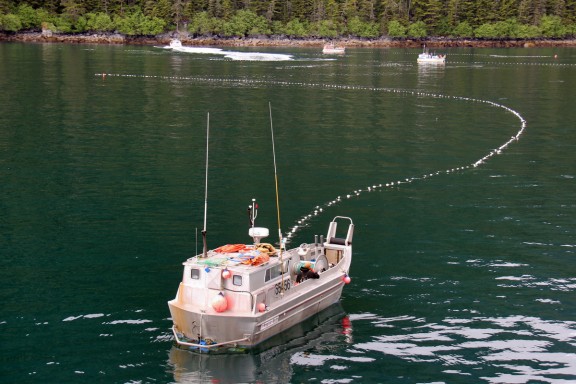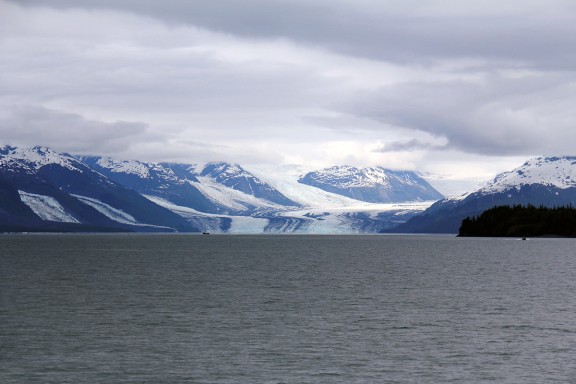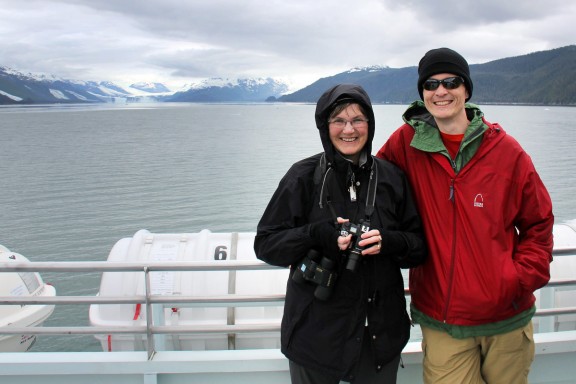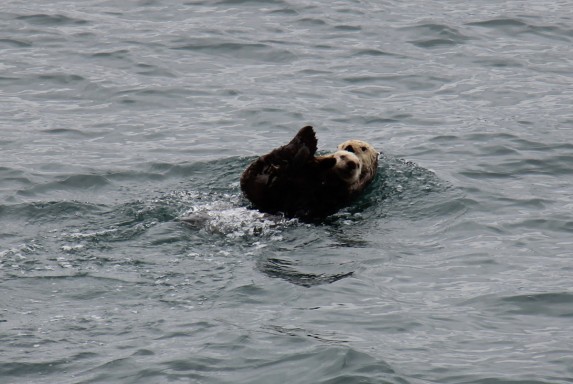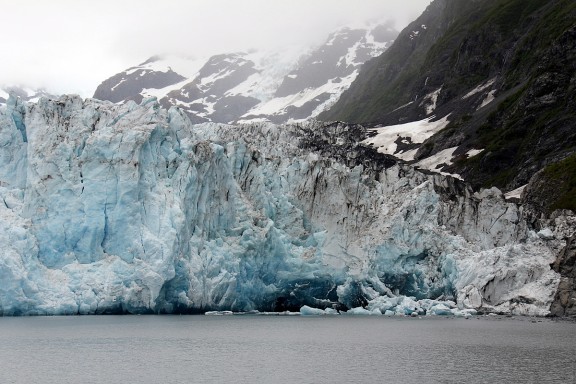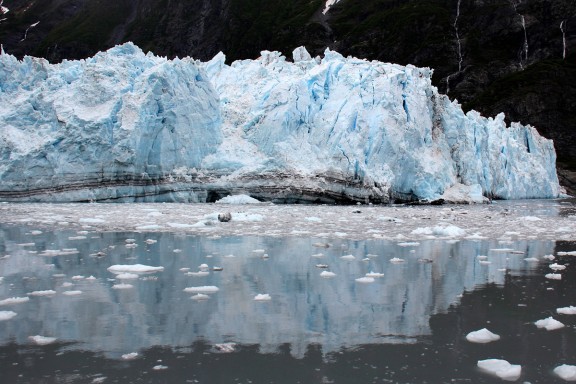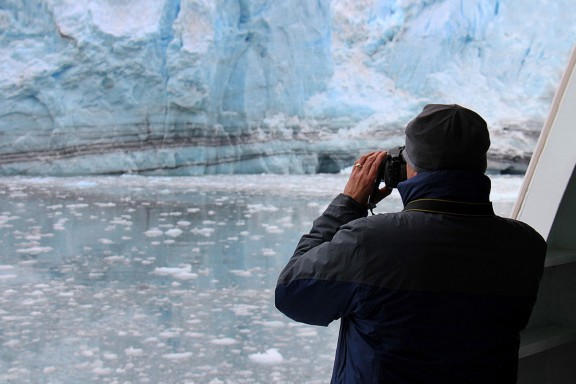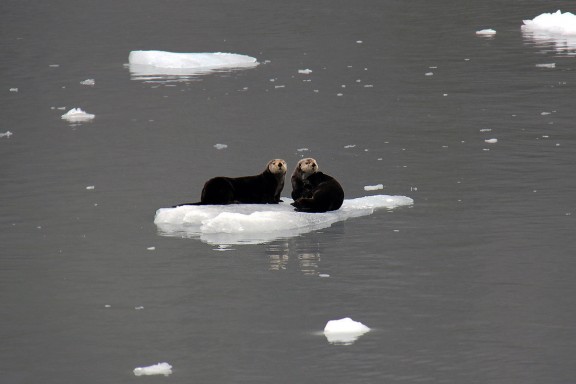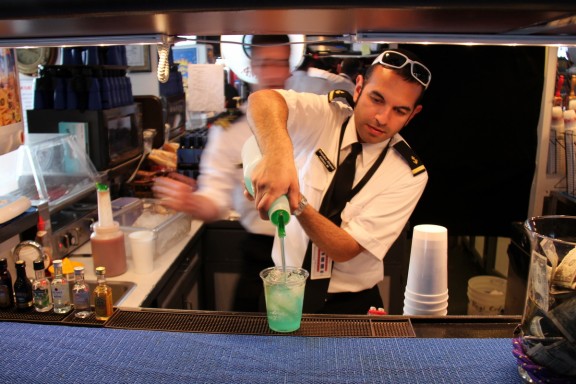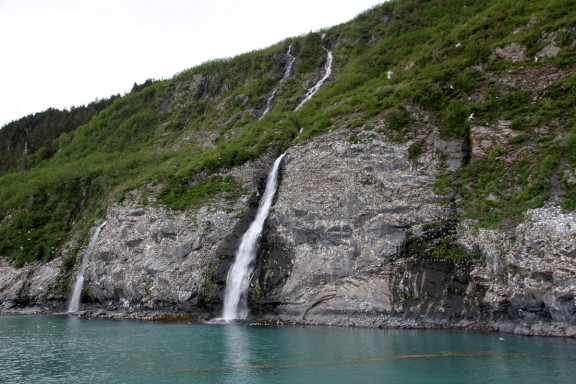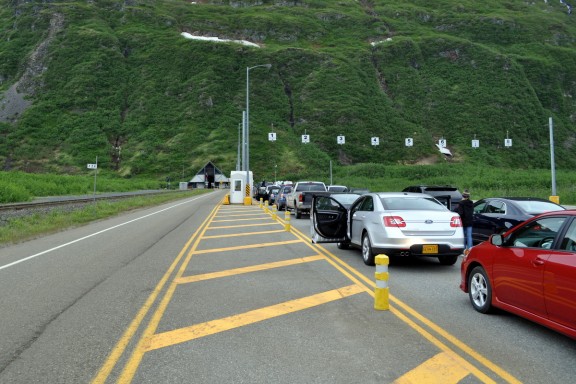Day 14: Whittier
Today’s agenda called for a timely wake up and departure from the Parkside Guest House in Anchorage to drive to Whittier and embark on a day cruise in the western reaches of Prince William Sound. The “timely” factor was largely because there is a giant 2.5 mile tunnel that one must pass through in order to drive to Whittier, and the railroad only opens it for inbound traffic 15 minutes every hour (on the half hour). Hence, we did not want to miss our boat waiting 45 minutes for the next tunnel opening.
After enjoying another fantastic breakfast of granola and berries, we threw on a couple extra layers, grabbed our gloves and jackets, and piled in the van for the 90-minute drive to Whittier. We left about 30 minutes before the hard 8:30AM departure time Dad declared the night before, which put a smile on everybody’s face.
Heading south on Highway 1, the weather was mostly cloudy, with a few pockets of sun, but no rain. Rather than continue south on Highway 1 into the Kenai Peninsula, we turned at Portage Glacier Road and headed east for a couple miles until we approached the entrance to the Anton Anderson Memorial Tunnel.
Expecting to wait for an opening, we were pleasantly surprised when we found the tunnel was currently allowing traffic to proceed to Whittier as we arrived (the 9:30AM opening). After paying the $12 toll, we rolled on through. The inside of the tunnel is just one lonely lane for everybody — cars and trains. The inner walls are still exposed rock, but jet turbine engines near the start and end of the tunnel illustrate the technological improvements over the years.
The port of Whittier was constructed under the supervision of the Corps of Engineers in 1942-43 to provide an all-weather terminal for the Alaska Railroad. During World War II, Whittier served as an all-weather railroad port that safeguarded the flow of military supplies, equipment, and personnel from tidewater to Anchorage and Fairbanks. The town — finally incorporated from an army base in 1969 — is still owned and operated by the Alaska Railroad and the Department of Defense. The entire town basically lives in one condo development (the Begich Towers, aka. the “city under one roof”, originally built in 1953 as a barracks).
Having arrived and checked in plenty early for our 12:30PM boat trip, we decided to explore Whittier on foot, including the nearby waterfalls, the train yard, the small boat harbor and a bunch of gift shops. If we had not been promised food on the boat, we would have most certainly tried the Kung-Pao Halibut available in one local eatery.
Eventually, it was time to board the ship, dubbed the Klondike Express. According to the tour company, it is the “fastest, most luxurious catamaran in Alaska.” I am dubious about this bit of puffery considering there are plenty of boats in Alaska, and the ship’s interior is basically a floating Denny’s. But don’t get me wrong, it was pretty nice.
By the time the boat finished boarding we were joined at our six-person table by a guy from Australia who was on vacation and another guy from Mexico who was on leave from his fishing job in Alaska due to injury. We were served a lunch of fish and chips as the boat pulled out of harbor and into open waters.
On our way out of Passage Canal into Prince William Sound, we sailed by a pod of Dall Porpoises who playfully swam right alongside the boat for several minutes, breaching the surface and diving back under the bow over and over.
We sailed west beneath Esther Island and turned north through Esther Passage. The U.S. Forest Service Ranger on the boat described this area as ground zero of the salmon fishing industry (at least during this time of the year), as evidenced by an estimated 40-50 fishing boats in the vicinity. As a former fisherman himself, Ranger Jim offered some great play-by-play of the fishing methods on display.
Upon our exit from Esther Passage, the cruise veered to the northeast and took a look at College Fjord, which derives its name from the fact that a couple of east coast exploring buddies who charted this area decided to name all the glaciers after universities (ie. Harvard, Yale, Dartmouth, Bryn Mawr, Wellesley, etc.)
In addition to glaciers, the most common thing we saw on our day cruise was sea otters. We sailed by one large pod of otters in College Fjord that was at least a hundred or so in size. With their trademark floating-on-the-back posture, they look amusingly curious as Alaska’s fastest and most luxurious catamaran passes them by.
Exiting College Fjord, we turned to the northwest and ventured into Barry Arm, which then curved west into Harriman Fjord. Halfway into the fjord, we pulled up close and personal with the terminus of Surprise Glacier. Given that our Glacier Bay cruise stopped about four miles short of a glacier terminus, getting to within a couple football fields of this tidewater glacier was extremely cool. We saw several small chunks of the glacier calve during our 15-20 minutes in the area.
Near the glacier, there was plenty of ice floating in the water. First, this offered a chance for some otters to take a breather. Second, it provided the crew an opportunity to fish out a chunk of glacier ice (they actually did) and market a new drink at the bar — the authentic glacier ice margarita.
After Surprise Glacier, we turned around and headed out of Barry Arm, taking in another trio of glaciers on the way (Cascade, Barry and Coxe). Impressive, but not as cool as Surprise Glacier. In order to not risk further glacial desensitization of his passengers, the captain sailed us back through Port Wells and into Passage Canal toward Whittier. We made one final pit stop at the Kittiwake Bird Rookery across the canal from Whittier, where thousands of Kittiwakes were nesting on the Cliffside.
After the boat docked, we quickly made our way to the van and queued up for the 6PM tunnel opening to depart Whittier. Not long after that, we completed our second 15-minute drive thru Maynard Mountain and continued up Highway 1 toward Anchorage. There was a ton of RV and truck traffic heading the other direction, probably because it was Friday afternoon and everybody in Anchorage goes to the Kenai Peninsula to hang out for the weekend.
Back in Anchorage, we made a second appearance at McGinley’s Pub for dinner, and returned to the Guest House. Since it feels like 5PM up here even when it’s closer to 9PM, Nicole and I walked down to the disc golf course and played a round of post-dinner disc golf. After that, we were finally prepared to check in for the night.
